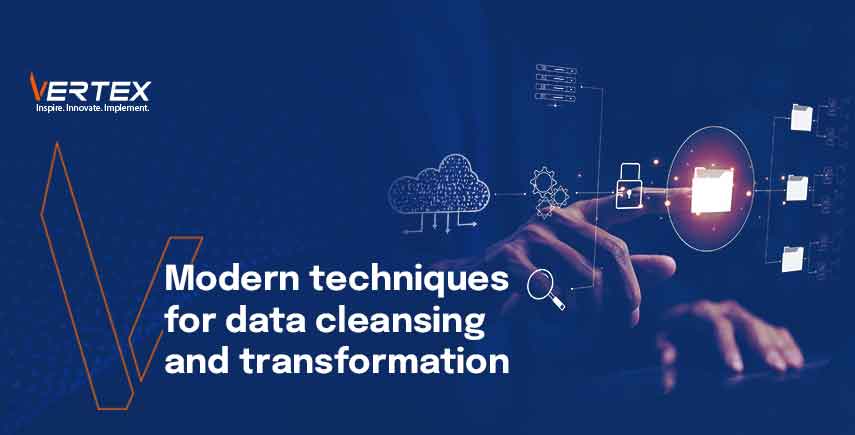
Venkatesh Balabhadra
July 22, 2024Modern Techniques for Data Cleansing and Transformation
Data cleansing and transformation are critical steps in data preprocessing, ensuring that data is accurate, consistent, and suitable for analysis.
With the increasing volume and complexity of data, modern techniques have evolved to address these challenges effectively.
This guide explores these advanced methods, providing a comprehensive overview for professionals seeking to enhance their data quality and integration processes.
Introduction to data cleansing and transformation
Data cleansing involves identifying and correcting errors, inconsistencies, and inaccuracies in the data.
Transformation, on the other hand, involves converting data from one format or structure to another, ensuring it aligns with the requirements of the target system or analysis.
These processes are essential for maintaining data integrity and reliability, directly impacting the quality of insights derived from data analytics.
Modern techniques for data cleansing

Automated data profiling
Automated data profiling tools examine datasets to identify data quality issues, such as missing values, duplicates, and outliers.
These tools use algorithms to assess data characteristics and generate reports that highlight potential problems, enabling data engineers to address issues promptly.
- Tools: Talend Data Quality, Informatica Data Quality, IBM InfoSphere Information Analyzer
- Benefits: Increased efficiency, comprehensive data assessment, and early detection of data quality issues.
Machine Learning-based anomaly detection
Machine learning algorithms can detect anomalies in datasets by learning patterns from historical data and identifying deviations.
Techniques like clustering, neural networks, and statistical methods are used to flag unusual data points that may indicate errors or outliers.
- Algorithms: K-means clustering, Isolation Forest, Autoencoders
- Benefits: High accuracy in detecting complex anomalies, scalability to large datasets, and adaptability to evolving data patterns.
Rule-based data validation
Rule-based data validation involves defining business rules and constraints that data must satisfy.
These rules can be applied to validate data during entry or batch processing, ensuring that only data meeting the specified criteria is accepted.
- Examples: Ensuring email formats are correct, dates fall within expected ranges, and numerical values are within acceptable limits.
- Tools: Apache NiFi, Trifacta, DataWrangler
- Benefits: Ensures adherence to business rules, reduces manual data inspection and improves data reliability.
Data enrichment and augmentation
Data enrichment involves enhancing datasets with additional information from external sources.
This process helps fill in missing values, validate existing data, and provide more context for analysis.
- Sources: Public datasets, APIs, third-party data providers
- Benefits: Improved data completeness, enhanced analytical capabilities, and better decision-making.
Modern techniques for data transformation
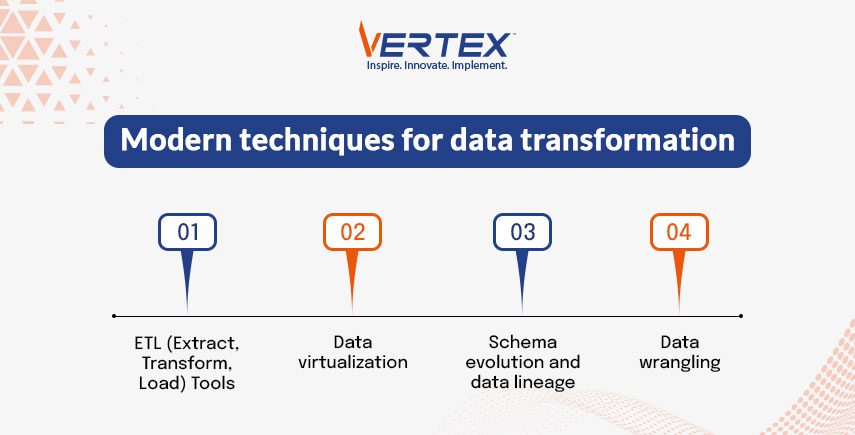
ETL (Extract, Transform, Load) Tools
ETL tools automate the extraction of data from various sources, transform it into the desired format, and load it into target systems.
Modern ETL tools offer advanced features like real-time processing, data integration from diverse sources, and support for complex transformations.
- Popular Tools: Apache Nifi, Talend, Apache Airflow, Microsoft Azure Data Factory
- Benefits: Streamlined data pipelines, reduced manual effort, and enhanced data consistency.
Data virtualization
Data virtualization allows users to access and manipulate data without requiring physical integration.
It creates a virtual layer that provides a unified view of data from multiple sources, enabling seamless data transformation and integration.
- Tools: Denodo, IBM Cloud Pak for Data, TIBCO Data Virtualization
- Benefits: Reduced data movement, real-time data access, and simplified data integration.
Schema evolution and data lineage
Schema evolution techniques manage changes in data structure over time, ensuring compatibility and consistency.
Data lineage tracks the origin, movement, and transformation of data through the lifecycle, providing transparency and traceability.
- Tools: Apache Atlas, Collibra, Alation
- Benefits: Better management of schema changes, improved data governance, and enhanced data traceability.
Data wrangling
Data wrangling involves manually or semi-automatically transforming and mapping raw data into a more usable format.
Modern data-wrangling tools provide intuitive interfaces and advanced functionalities to simplify this process.
- Tools: Trifacta, DataWrangler, Alteryx
- Benefits: Increased productivity, user-friendly interfaces, and ability to handle complex transformations.
Integration of AI and ML in data transformation
Artificial Intelligence (AI) and Machine Learning (ML) are increasingly integrated into data transformation processes to enhance automation and intelligence.
These technologies enable predictive data transformations, automated feature engineering, and intelligent data mapping.
- Techniques: Natural Language Processing (NLP) for text data transformation, reinforcement learning for adaptive data pipelines, and supervised learning for automated feature selection.
- Benefits: Reduced manual intervention, improved accuracy, and scalability.
Best practices for implementing modern data cleansing and transformation techniques
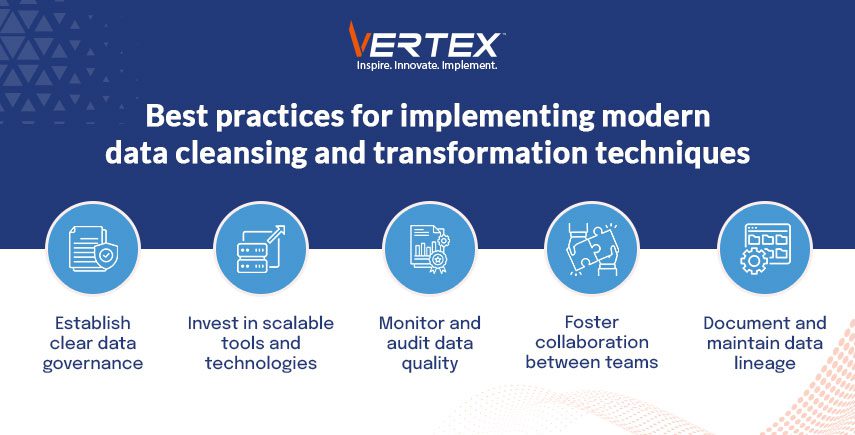
Establish clear data governance
Define data governance policies to ensure consistent data quality standards, roles, and responsibilities. This framework helps maintain data integrity and compliance with regulatory requirements.
Invest in scalable tools and technologies
Choose tools and technologies that can scale with your data growth and support advanced data processing needs. Scalability ensures long-term sustainability and adaptability.
Monitor and audit data quality
Regularly monitor data quality metrics and conduct audits to identify and address issues proactively. Continuous monitoring helps maintain high data standards and prevent quality degradation.
Foster collaboration between teams
Encourage collaboration between data engineers, data scientists, and business analysts to ensure alignment on data quality objectives and effective implementation of data transformation strategies.
Document and maintain data lineage
Maintain detailed documentation of data lineage to provide transparency and traceability. This practice aids in troubleshooting, auditing, and ensuring data accuracy.
Conclusion
Modern techniques for data cleansing and transformation have significantly advanced, leveraging automation, machine learning, and sophisticated tools to address data quality and integration challenges.
By adopting these methods, organizations can ensure their data is accurate, consistent, and ready for insightful analysis, driving better decision-making and business outcomes.
Recent Blogs
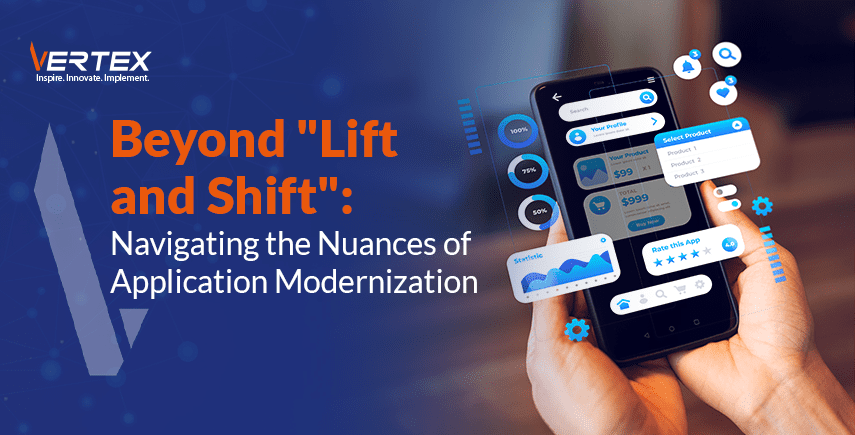
19 May, 2025

19 May, 2025

12 May, 2025

5 May, 2025

28 April, 2025

21 April, 2025
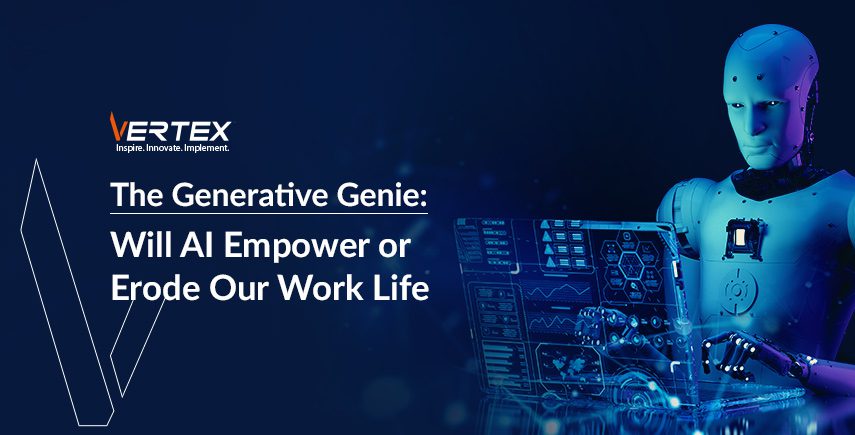
14 April, 2025

7 April, 2025
Recent News

2 February, 2025

14 November, 2024
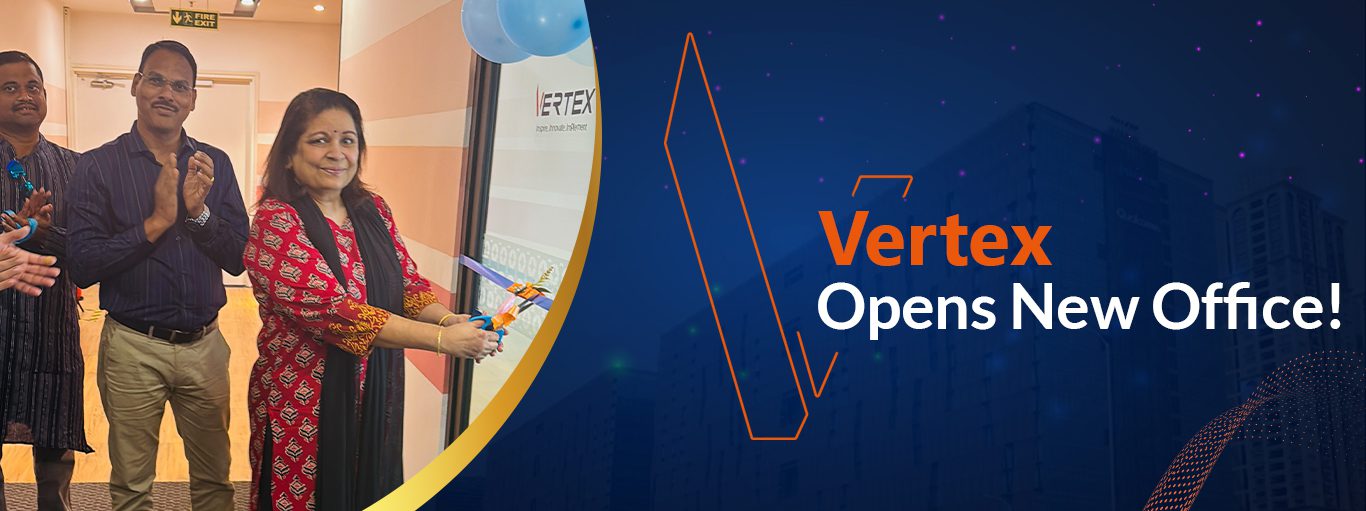
4 November, 2024

1 August, 2024

6 March, 2024

28 February, 2024

12 June, 2023



